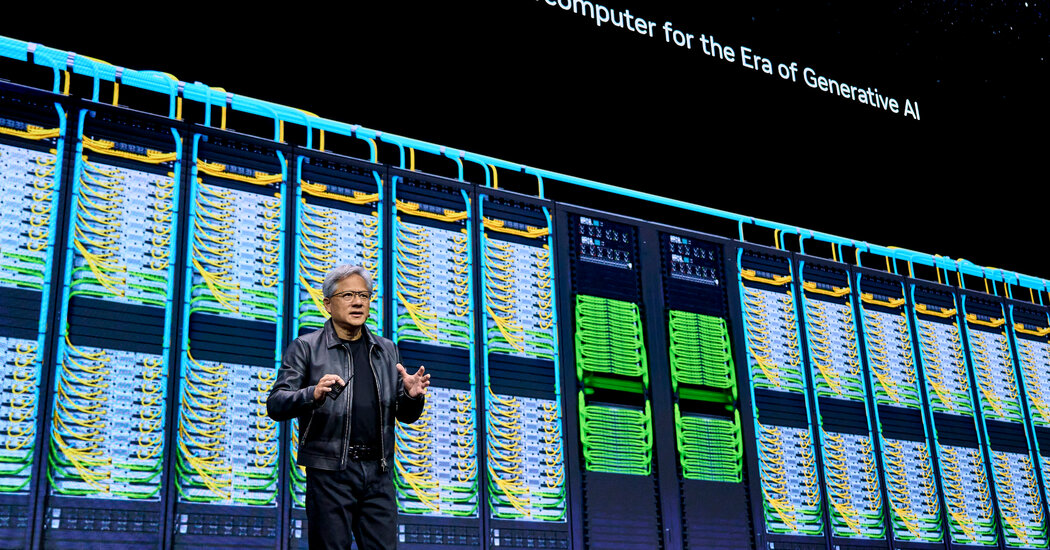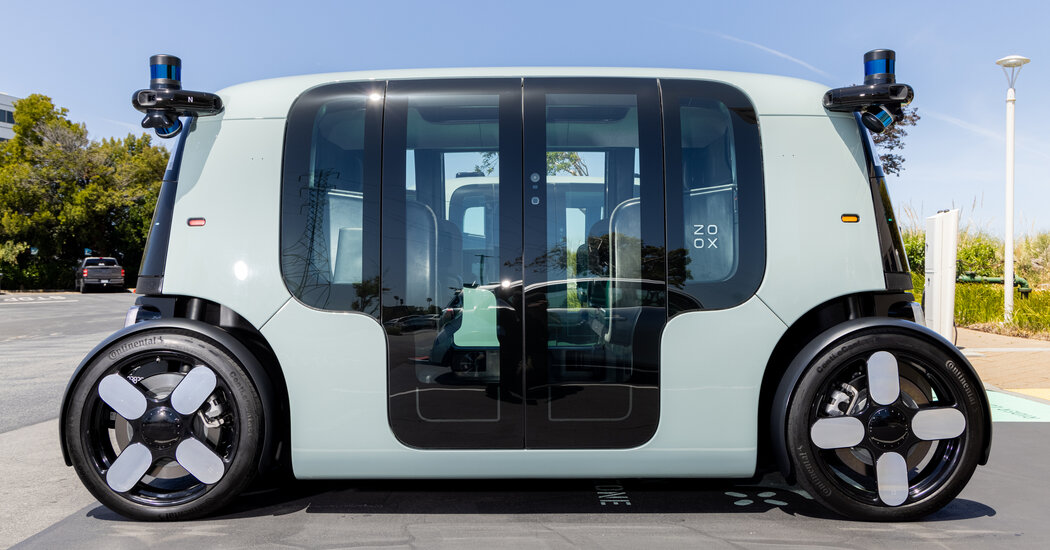Nvidia, the kingpin of chips powering artificial intelligence, on Wednesday released quarterly financial results that again showed torrid growth and said the increases would continue, underlining how it has become one of the world’s most valuable companies.
Nvidia is one of the most visible winners of the A.I. boom and one of the tech stocks, known as the “Magnificent Seven,” that have helped power the stock market. Investors have bet heavily on continued demand for its specialized, costly semiconductors, which are used for training popular A.I. services like OpenAI’s ChatGPT chatbot.
Nvidia’s valuation has surged more than 40 percent to $1.7 trillion since the start of the year, helping it briefly eclipse the market values of Amazon and Alphabet recently before receding to the fifth-most-valuable tech company.
The company’s stock market gains are largely a result of repeatedly exceeding analysts’ expectations for growth, a feat becoming more difficult as they keep raising their predictions.
Nvidia reported that revenue in its fiscal fourth quarter more than tripled from a year earlier to $22.1 billion, while profit soared nearly ninefold to $12.3 billion.
Revenue came in above the $20 billion the company predicted in November, though below some analyst estimates that had recently risen to as much as $23 billion.
Nvidia predicted that revenue in the current quarter would total about $24 billion, also more than triple the year-earlier period and higher than analysts’ average forecast of $22 billion. The company’s shares rose in after-hours trading.
Jensen Huang, Nvidia’s co-founder and chief executive, argues that an epochal shift to upgrade data centers with chips needed for training powerful A.I. models is still in its early phases. That will require spending roughly $2 trillion to equip all the buildings and computers to use chips like Nvidia’s, he predicts.
“Accelerated computing and generative A.I. have hit the tipping point,” Mr. Huang said in a news release. “Demand is surging worldwide across companies, industries and nations.”
One factor driving Nvidia’s latest revenue growth is the ability of the company’s production partners, led by Taiwan Semiconductor Manufacturing Company, to boost supplies of Nvidia’s flagship A.I. chip, which commands prices ranging from $15,000 to $40,000.
But giant cloud computing companies like Amazon, Google and Microsoft are designing their own A.I. chips to use in addition to Nvidia’s, and rival chipmakers keep introducing their own A.I. products.
Intel, which has long dominated the standard microprocessor chip industry but lags in A.I., marshaled an array of partners and potential customers in Silicon Valley on Wednesday to discuss its plans to offer manufacturing services, which could boost industry capacity to build A.I. chips. Attendees included Sam Altman, who relies heavily on Nvidia chips as OpenAI’s chief executive.
“Intel was the evil Borg of the industry at one time,” said Daniel Newman, chief executive of Futurum Research, which tracks the semiconductor industry. Now, he said, “companies are kind of coming together to make sure Nvidia doesn’t get too much more powerful.”
The Biden administration has raised another set of hurdles for Nvidia and other U.S. chip manufacturers, placing restrictions on their chip sales in China. Nvidia has responded by selling less-powerful versions of some products in the market.







